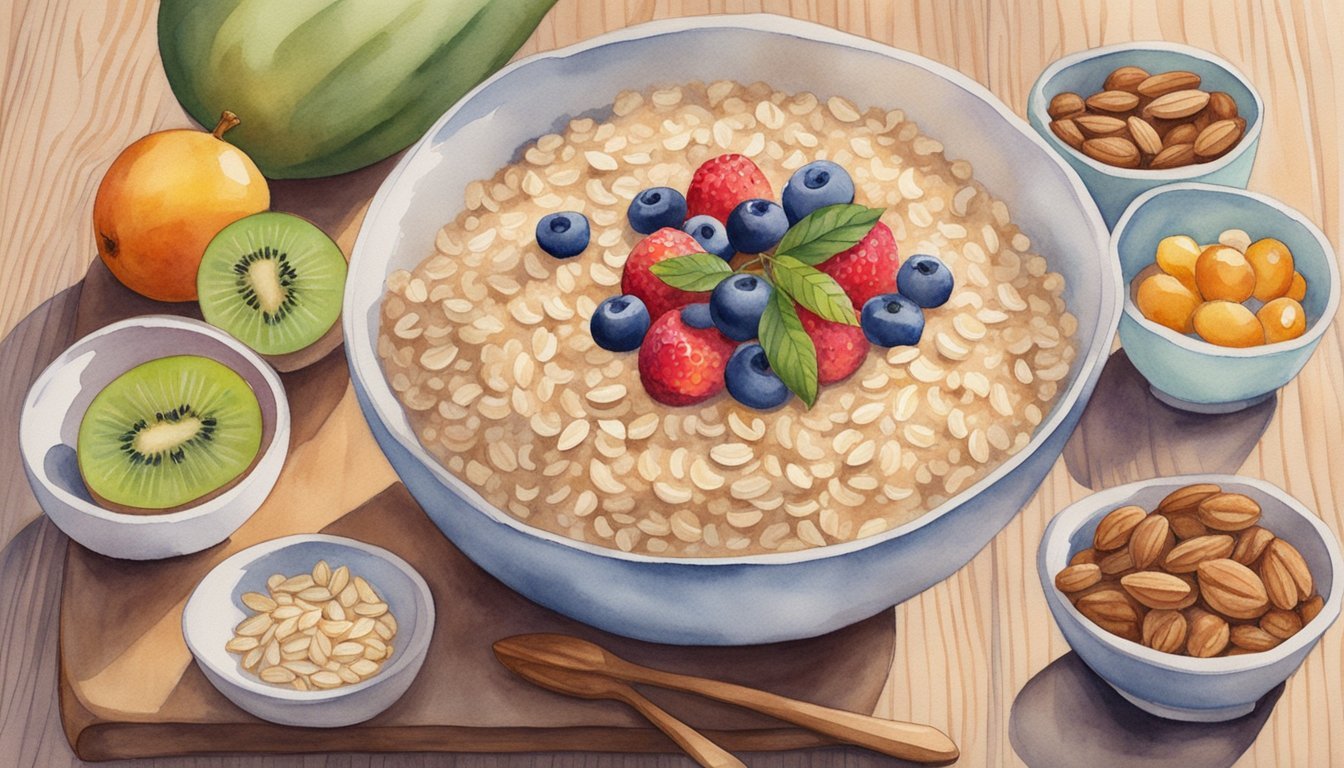Understanding Oatmeal and Gluten
In exploring oatmeal and gluten, it’s crucial to clarify what gluten is, assess the natural composition of oats, understand potential cross-contamination, and distinguish between gluten sensitivity and celiac disease.
What Is Gluten?
Gluten is a protein found in grains such as wheat, barley, and rye. It’s responsible for the elasticity and chewy texture in baked goods. Some people may have an adverse reaction to this protein, leading them to seek out gluten-free options.
Are Oats Naturally Gluten-Free?
Oats themselves do not contain gluten, which is the problematic protein for those with gluten intolerance or celiac disease. They contain a protein called avenin, which is safe for the majority of people with gluten-related disorders.
The Issue of Cross-Contamination
Despite being naturally gluten-free, oats are often processed in facilities that handle gluten-containing grains. This can lead to cross-contamination, making it unsafe for people with gluten sensitivities or celiac disease unless the oats are certified gluten-free.
Gluten Sensitivity vs. Celiac Disease
Gluten sensitivity and celiac disease are different responses of the immune system to gluten. While celiac disease is an autoimmune disorder triggered by gluten ingestion, causing damage to the small intestine, non-celiac gluten sensitivity causes symptoms without intestinal damage. It’s important to note that some individuals with celiac disease may also have avenin sensitivity, reinforcing the need for a gluten-free diet.
Is There Any Connection Between Historical Events and Gluten-Free Diets?
The rise of gluten-free diets often sparks curiosity about historical influences. Ancient cultures, particularly during times of upheaval, may have shaped dietary practices. Exploring such connections, one might wonder, who was the pharaoh in moses’ era, and how societal changes influenced the nutritional choices of those affected by such monumental events.
Choosing and Using Gluten-Free Oatmeal

When considering a gluten-free diet, the right selection and use of oats is crucial. This is especially important for those with celiac disease or gluten sensitivities, as they need to avoid all kinds of gluten contamination to maintain their health.
Identifying Gluten-Free Oats
Gluten-free oats are distinct from regular oats, primarily due to the measures taken during their cultivation and processing to prevent cross-contamination with gluten-containing grains. While oats themselves do not contain gluten proteins, they can be contaminated if they are grown near or processed with wheat, barley, or rye. Look for oats labeled “gluten-free,” which means they have been tested and confirmed to have less than 20 parts per million (ppm) of gluten.
Understanding Gluten-Free Labels
The FDA regulates the labeling of gluten-free foods. For oats to be labeled as gluten-free, they must follow strict protocols and test below the FDA standard of 20 ppm of gluten. Certified gluten-free labels can also offer additional confidence, signifying that an independent organization has verified the product’s gluten-free status.
Preparation and Cooking Tips
When preparing gluten-free oatmeal, it’s important to use clean kitchen tools and surfaces to avoid gluten contamination. Cooking gluten-free oats is similar to regular oats. Steel-cut oats require more time to cook, while instant oatmeal and rolled oats are quicker to prepare. The water-to-oat ratio and cooking time should be adjusted according to the type of oats and desired consistency.
Incorporating Gluten-Free Oats into Your Diet
Gluten-free oats are a versatile ingredient that can be included in your diet in various ways. They offer numerous health benefits, including improving heart health, lowering cholesterol, aiding in weight loss, and providing a good source of fiber, iron, magnesium, manganese, B vitamins, and other minerals. Oat flour can be used for gluten-free baking, and gluten-free oats can be added to granola or used to make oatmeal pancakes. However, introducing oats into a gluten-free diet should be done carefully, and it’s advisable to speak with a doctor or healthcare provider if you have celiac disease or a gluten sensitivity to avoid any immune system response.

